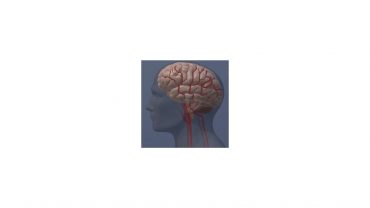Research Highlights:
- Among hospitalized adults, ages 18-44 who had a history of stroke or transient ischemic attack (TIA), the cause of another hospitalization was 48% more likely to be another stroke if they were habitual marijuana smokers.
- According to previous research, problematic marijuana use has already been associated with an increased risk of an initial stroke, however, this is the first study to suggest that recurrent stroke may also be more likely.
- Since recreational marijuana use is legal in numerous states in the U.S., understanding the impact of habitual use on cardiovascular health is important.
Embargoed until 4 a.m. CT/5 a.m. ET Thursday, Feb. 3, 2022

 (NewMediaWire) – February 03, 2022 – NEW ORLEANS – Among younger adults who had a previous stroke or a transient ischemic attack (TIA) and were later hospitalized for any cause, recurrent stroke was far more likely among patients with cannabis use disorder, according to preliminary research presented at the American Stroke Association’s International Stroke Conference 2022, a world premier meeting for researchers and clinicians dedicated to the science of stroke and brain health to be held in person in New Orleans, and virtually, Feb. 8-11, 2022.
(NewMediaWire) – February 03, 2022 – NEW ORLEANS – Among younger adults who had a previous stroke or a transient ischemic attack (TIA) and were later hospitalized for any cause, recurrent stroke was far more likely among patients with cannabis use disorder, according to preliminary research presented at the American Stroke Association’s International Stroke Conference 2022, a world premier meeting for researchers and clinicians dedicated to the science of stroke and brain health to be held in person in New Orleans, and virtually, Feb. 8-11, 2022.
Cannabis use disorder is defined as dependent use of cannabis despite having a psychological, physical and social functioning impairment. According to the American Heart Association, stroke rates are increasing in adults between ages 18 and 45, and each year young adults account for up to 15% of strokes in the United States.
“Since marijuana use is more common among younger people and is now legal in several U.S. states, we felt it was crucial to study the various risks it may impose,” said Akhil Jain, M.D., lead author of the study and a resident physician at Mercy Fitzgerald Hospital in Darby, Pennsylvania. “First-time stroke risk among cannabis users is already established, so it intrigued us to investigate whether continued marijuana dependence also predisposes younger people to develop further strokes.”
The researchers examined health information from the National Inpatient Sample, a large, publicly available database that compiles data on more than 7 million hospital stays annually across the U.S. For this study, the sample included 161,390 adults between 18-44 years of age who had been hospitalized for any reason between October 2015 and 2017, and whose health records indicated a previous stroke (either clot-caused or bleeding stroke) or TIA.
Using hospital diagnosis codes, researchers identified patients within the sample who met the criteria for cannabis use disorder, excluding those with charts indicating their cannabis dependence was in remission. This divided the sample into 4,690 patients who had been diagnosed with cannabis use disorder and 156,700 who had not. The median age for both groups was 37 years.
The study found that when compared with patients without cannabis use disorder, patients with the condition were:
- More likely to be male (55.2% vs. 40.9%), Black adults (44.6% vs. 37.2%), or to smoke tobacco (73.9% vs. 39.6%).
- More likely to be diagnosed with chronic obstructive pulmonary disease (21.5% vs. 19.0%), depression (20.4% vs. 16.1%) or psychosis (11.2% vs. 7.5%).
- Significantly more likely to abuse alcohol (16.5% vs. 3.6%).
- Less likely to have high blood pressure (53.1% vs. 55.6%), diabetes (16.3% vs. 22.7%), high cholesterol (21.6% vs. 24.1%) or obesity (12.0% vs. 19.6%).
Compared to current hospitalizations, the analysis found:
- Among adults with cannabis use disorder, 6.9% were hospitalized for a recurrent stroke, compared to only 5.4% hospitalized without the disorder.
- After adjusting for demographic factors and relevant pre-existing medical conditions (age at admission, sex, race, payer status, median household income, type of admission, hospital bed-size, region, location/teaching status and other medical conditions including traditional cardiovascular risk factors), patients with cannabis use disorder were 48% more likely to have been hospitalized for recurrent stroke than those without the disorder.
- Cannabis use disorder was most prominent among males, young Black or white adults and those who lived in low-income neighborhoods or in the northeast and southern regions of the U.S.
“Young marijuana users who have a history of stroke or TIA remain at significantly higher risk of future stroke. Therefore, it is essential to increase awareness among younger adults of the adverse impact of chronic, habitual use of marijuana, especially if they have established cardiovascular disease risk factors or previous stroke episodes,” Jain said.
Possible mechanisms that have emerged from other research on cannabis use disorder include impairment of blood vessel function, changes in blood supply, an increased tendency towards blood-clotting, impaired energy production in brain cells, and an imbalance between molecules that harm healthy tissue and the antioxidant defenses that neutralize them.
Results from this study may not be generalizable to older adults (ages greater than 44), who are more likely to have a greater number of chronic health conditions and cardiovascular risk factors. The study is also limited in that all data was collected at a single point in time, rather than following participants over time. In addition, while the hospital coding identified cannabis use disorder, the data did not include information on the exact amount and duration of cannabis use or medications used.
“Our study is hypothesis-generating research for future prospective and randomized controlled studies. More research work is required to look deeply into this concerning clinical question. Most importantly, the impact of various doses, duration, forms of cannabis abuse, and the use of medicinal cannabis on the occurrence of recurrent strokes are critical questions that need to be answered,” Jain said.
According to an August 2020 scientific statement from the American Heart Association, preliminary studies have found that cannabis use may negatively impact the heart and blood vessels. Although cannabis may be helpful for conditions such as spasticity associated with multiple sclerosis, among others, cannabis does not appear to have any well-documented benefits for the prevention or treatment of cardiovascular diseases.
Co-authors are Rupak Desai, M.B.B.S.; Terry Ricardo Went, M.B.B.S.; Waleed Sultan, M.B.B.Ch.; Dwayne Wiltshire, M.B.B.S.; Geethu Jnaneswaran, M.B.B.S.; Athul Raj Raju, M.B.B.S.; Roshna Asifali; Aamer Mohammad, M.B.B.S.; and Bisharah Rizvi, M.D. The list of authors’ disclosures is available in the abstract.
No funding sources are reported for this study.
Statements and conclusions of studies that are presented at the American Stroke Association and American Heart Association’s scientific meetings are solely those of the study authors and do not necessarily reflect the Association’s policy or position. The Association makes no representation or guarantee as to their accuracy or reliability. Abstracts presented at the Association’s scientific meetings are not peer-reviewed, rather, they are curated by independent review panels and are considered based on the potential to add to the diversity of scientific issues and views discussed at the meeting. The findings are considered preliminary until published as a full manuscript in a peer-reviewed scientific journal.
The Association receives funding primarily from individuals; foundations and corporations (including pharmaceutical, device manufacturers and other companies) also make donations and fund specific Association programs and events. The Association has strict policies to prevent these relationships from influencing the science content. Revenues from pharmaceutical and biotech companies, device manufacturers and health insurance providers and the Association’s overall financial information are available here.
Additional Resources:
The American Stroke Association’s International Stroke Conference (ISC) is the world’s premier meeting dedicated to the science and treatment of cerebrovascular disease. ISC 2022 will be held in person in New Orleans and virtually, Feb. 8-11, 2022. The three-day conference will feature more than 1,500 compelling presentations in 17 categories that emphasize basic, clinical and translational sciences as research evolves toward a better understanding of stroke pathophysiology with the goal of developing more effective therapies. Engage in the International Stroke Conference on social media via #ISC22.
About the American Stroke Association
The American Stroke Association is devoted to saving people from stroke — the No. 2 cause of death in the world and a leading cause of serious disability. We team with millions of volunteers to fund innovative research, fight for stronger public health policies and provide lifesaving tools and information to prevent and treat stroke. The Dallas-based association officially launched in 1998 as a division of the American Heart Association. Connect with us on stroke.org, Facebook, Twitter or by calling 1-888-4STROKE.
###
For Media Inquiries and AHA Expert Perspective:
AHA Communications & Media Relations in Dallas: 214-706-1173; ahacommunications@heart.org
Karen Astle: 214-706-1392; karen.astle@heart.org
For Public Inquiries: 1-800-AHA-USA1 (242-8721)
heart.org and stroke.org
